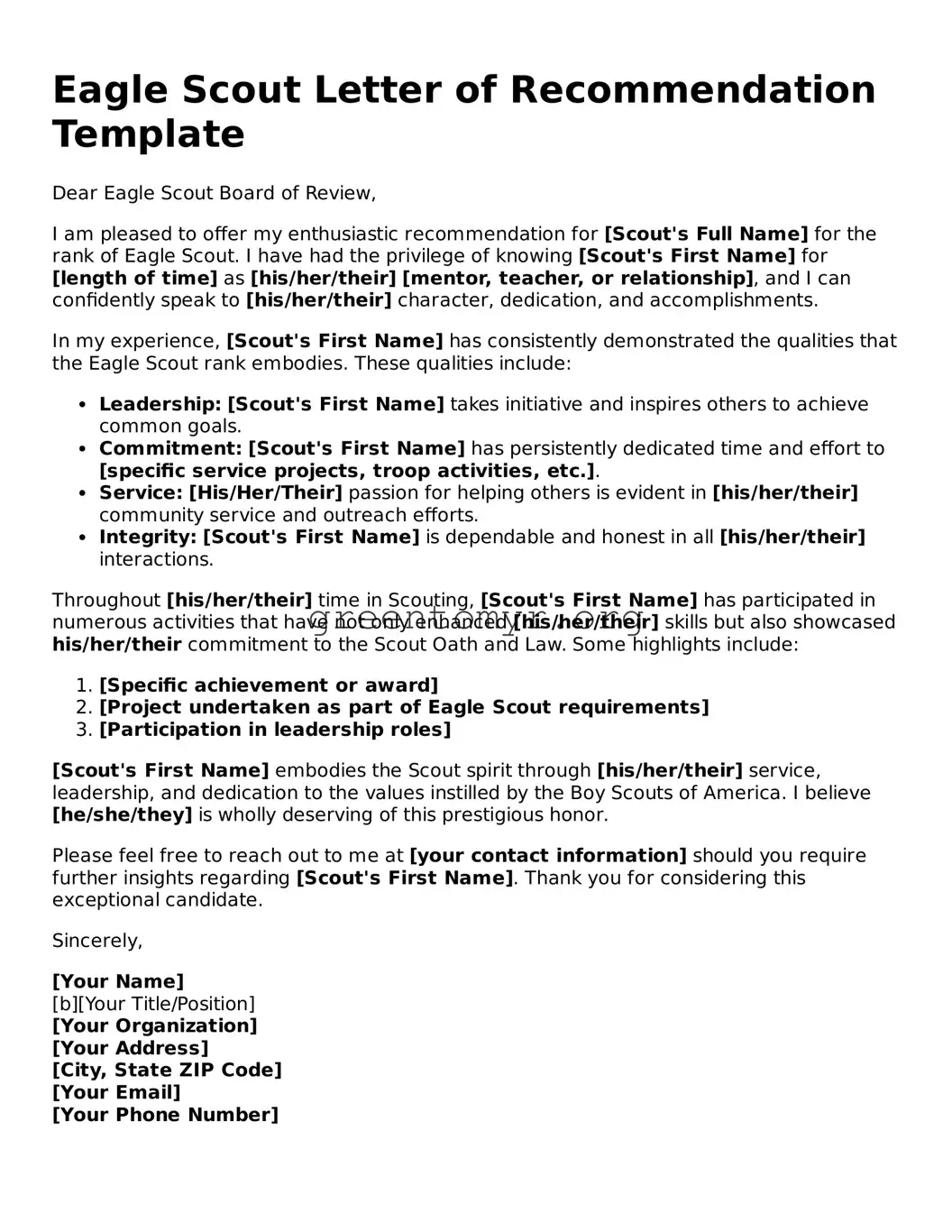Eagle Scout Letter of Recommendation Template
Dear Eagle Scout Board of Review,
I am pleased to offer my enthusiastic recommendation for [Scout's Full Name] for the rank of Eagle Scout. I have had the privilege of knowing [Scout's First Name] for [length of time] as [his/her/their] [mentor, teacher, or relationship], and I can confidently speak to [his/her/their] character, dedication, and accomplishments.
In my experience, [Scout's First Name] has consistently demonstrated the qualities that the Eagle Scout rank embodies. These qualities include:
- Leadership: [Scout's First Name] takes initiative and inspires others to achieve common goals.
- Commitment: [Scout's First Name] has persistently dedicated time and effort to [specific service projects, troop activities, etc.].
- Service: [His/Her/Their] passion for helping others is evident in [his/her/their] community service and outreach efforts.
- Integrity: [Scout's First Name] is dependable and honest in all [his/her/their] interactions.
Throughout [his/her/their] time in Scouting, [Scout's First Name] has participated in numerous activities that have not only enhanced [his/her/their] skills but also showcased his/her/their commitment to the Scout Oath and Law. Some highlights include:
- [Specific achievement or award]
- [Project undertaken as part of Eagle Scout requirements]
- [Participation in leadership roles]
[Scout's First Name] embodies the Scout spirit through [his/her/their] service, leadership, and dedication to the values instilled by the Boy Scouts of America. I believe [he/she/they] is wholly deserving of this prestigious honor.
Please feel free to reach out to me at [your contact information] should you require further insights regarding [Scout's First Name]. Thank you for considering this exceptional candidate.
Sincerely,
[Your Name]
[b][Your Title/Position]
[Your Organization]
[Your Address]
[City, State ZIP Code]
[Your Email]
[Your Phone Number]
